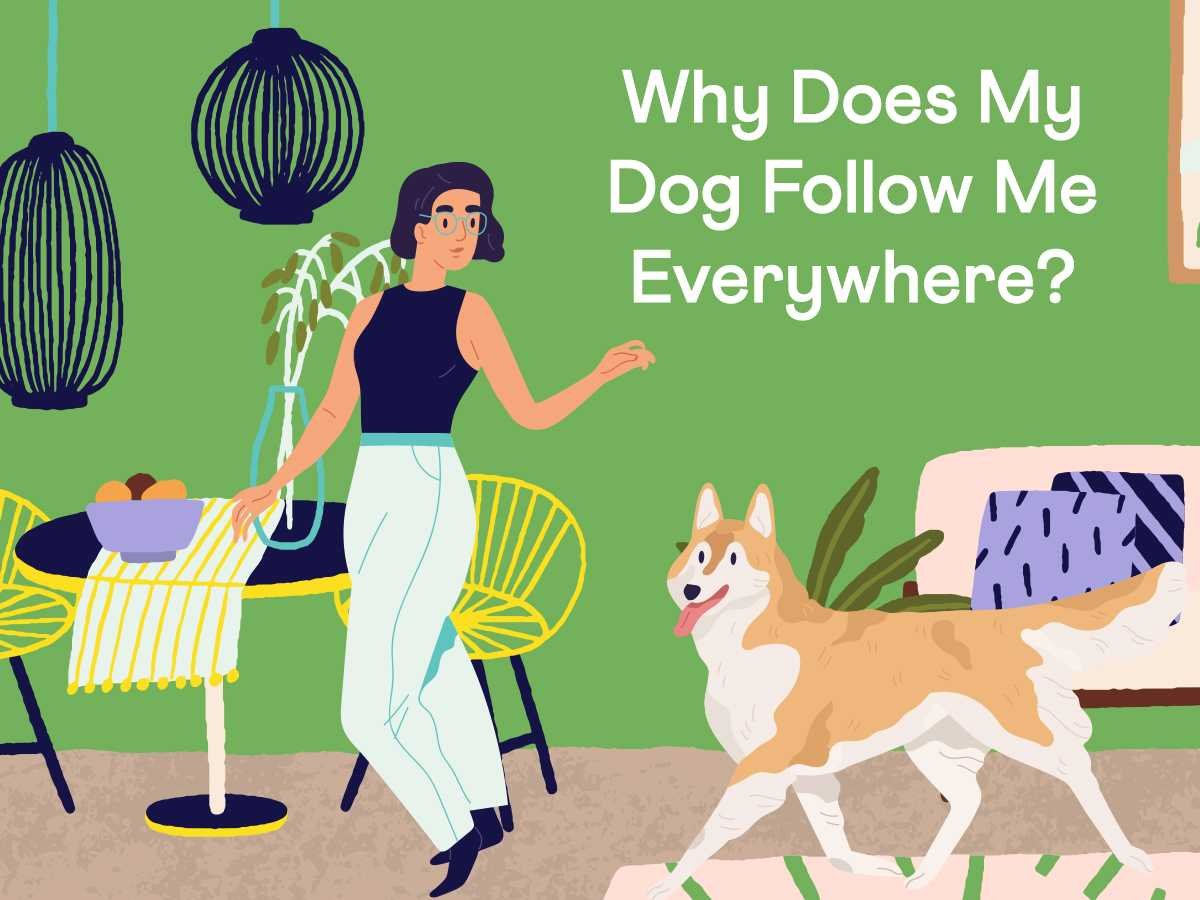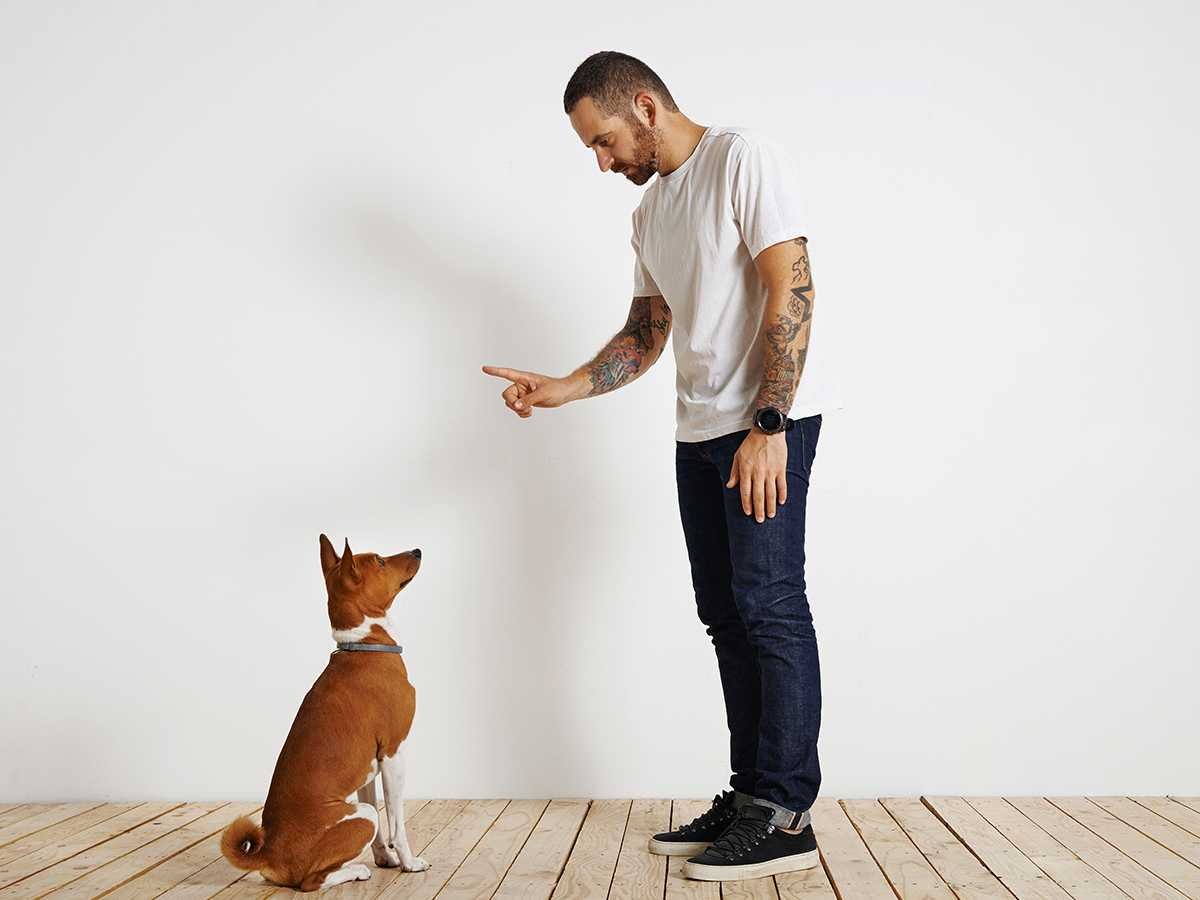Why Does My Dog Follow Me Everywhere?
Why does my dog follow me everywhere? Finn explores the possible reasons behind this peculiar behavior and what you can do about it.
Table of Contents:
Is your dog your shadow? If you can’t go anywhere without your dog following right behind you, you know how flattering yet frustrating it can feel sometimes.
Finn is committed to empowering pet parents with everything they need to give their dogs happy and long lives. To help you better understand your pup’s motivation for stalking you from room to room, let’s take a look at the behavioral and biological reasons behind it.
They Bonded to You as a Puppy
Studies have shown that puppy socialization is one of the most significant contributors to how well-adjusted they are as adults. For better or worse, we can trace many of the behaviors we see in our adult dogs back to their puppy years. This period is when they learn how to behave and what it means to be a dog.
Puppies go through a few set stages of development, starting from birth. The imprinting (or critical learning) stage lasts from zero to four months of age, and it’s the window where their brain development is most impressionable. What they learn during this time sticks with them for life, and dogs may learn more in these four months than they do through the rest of puppyhood.
If your puppy was taken away from its mother too soon, which most people consider anytime before they turn eight weeks old, that period of imprinting might have occurred on you instead. Animals can’t conceptualize different species, or even what they are or look like, so there is no real dividing line between humans and canines. They could be following you around because they see you as their mother, and they just want to be where you are at all times.
You (Unintentionally) Trained Them To Follow You
While people use multiple techniques to train their dogs, positive reinforcement is most effective. With positive reinforcement, you use some kind of reward (treats, toys, praise, etc.) to motivate your dog to continue to do whatever the desired behavior is. The key is to reward your dog immediately after they perform that behavior.
The problem with positive reinforcement is that it doesn’t always happen as planned. For instance, if you are trying to teach your dog to tell you when he needs to go outside, but you give him a treat when he barks at the back door, you may be teaching him that the behavior you want is barking.
That’s why it is easy to train your dog to perform behaviors accidentally, as well. If your dog follows you into the kitchen and you give them a piece of your snack or a treat, they are learning that you want them to follow you into the kitchen. Why else would you be rewarding them, right?
It Might Be Instinct
We all tend to treat our dogs like they are other human members of the family, but ultimately, they are animals. Although science has changed and many experts no longer believe that dogs are true “pack animals” the way we previously thought, there is no doubt that they are social by nature.
When combined with the fact that they have been domesticated for more than 30,000 years, dogs have become incredibly adept at interpreting human and canine behaviors. Facial gestures, body position, vocalizations — each piece can help your dog understand how you’re feeling and what you may want.
If you love your dog, and your behaviors toward your dog show that affection, you’re probably someone your dog wants to be around too.
In addition, being around and physically interacting with someone they feel close to can stimulate the release of a hormone called oxytocin. Known as the “love hormone,” oxytocin is a bonding hormone that’s stimulated by affection, especially physical touch, and it makes you feel all warm and fuzzy inside.
When you feel good around someone, don’t you want to be around them as much as possible? That could be all that’s motivating your dog to follow you around — you just make them feel happy! Are you teary-eyed yet?
They May Be Trying To Tell You Something
Although your dog may be following you around for good reasons (or, at least, unintentionally good ones), there is one other possibility to consider. Because dogs can’t use English to communicate their needs to us, they have to rely on other forms of communication. Barking, for instance, is a way for them to get your attention quickly, even though they may not always use it appropriately.
If your dog is following you from room to room while whining, barking, or pacing, take a second to see if there is anything they need. You can do this by following them back or paying attention to what they seem to be looking at or for.
Are they out of water? Do they need to go outside? Your dog may just be trying to direct you toward a physical need to fulfill.
If you can’t find anything obvious, but your dog continues to follow you around whining, it may be worth a trip to your veterinarian. Sudden changes in their behavior can indicate that they aren’t feeling well or are in pain.
It May Be a Sign of Stress
Although having your dog tailing you constantly may give you anxiety, that behavior may also indicate that your dog is experiencing nervousness of their own. Specifically, it may be a symptom of separation anxiety.
“Normal” anxiety and separation anxiety differ regarding their triggers and how they cause your dog to act when you are not around. When you are still in the home, it may be difficult to hone in on which type of anxiety your dog has, and it may require using cameras to see what’s going on when you’re gone.
If you come home to a puddle of drool and destroyed toys or furniture, you may want to look more into possible separation anxiety as a cause. Also, look for other signs, like excessive paw licking or indoor accidents.
When separation anxiety goes on long enough, dogs begin to develop a sort of sixth sense about when their owners are getting ready to leave. During these times, your dog will be extra clingy and may be velcroed to you as you walk around the house.
It’s essential to identify this behavior and work on counteracting it as soon as you notice it, as continued stress can lead to long-term mental and physical health problems.
How To Stop Your Dog From Following You Everywhere
The first and most crucial step in stopping your dog from following you around everywhere is identifying why they might be doing it.
Changing behaviors does not take a one-size-fits-all approach, so you need to know what you may be dealing with to handle it appropriately. You may want to bring in a professional animal behaviorist to help, as well as schedule an appointment with your veterinarian to rule out any physical health-related causes.
Once you have a better idea of what’s going on with your dog, you can get to work helping to counteract it—options like calming supplements, retraining, and addressing any other health issues (like paw chewing) can help!
In general, there are a few tips that can help you with most of the different reasons your dog may be following you around. Overall, these tips can also help your dog stay mentally engaged even if they don’t suffer from anxiety or cling to you wherever you go in the house.
Set healthy boundaries.
Although it may seem difficult to put space between you and your baby (and it can be, we get it!), setting healthy boundaries for where your dog is allowed to follow you can help. Healthy boundaries may mean you need to get baby gates to keep your dog out of the kitchen when you’re making dinner or have them sleep in their own bed instead of with you, even if just on the weekdays.
Keep your dog’s mind engaged.
Sometimes, “velcro” dogs are following you around just out of sheer boredom. To help, try getting them new and different toys and ensuring they get plenty of physical activity. If your dog deals with separation anxiety, keep a rotating selection of toys they only get when you leave. These special toys can help create positive associations with you leaving instead of stress.
Stay calm.
When you’re at your wit’s end with your dog’s behavior, try to stay calm. Yelling at your dog or trying to shoo your dog out of the room aggressively doesn’t teach them not to follow you; it teaches them that they should be afraid of you. Use patience with your dog to maintain the love and trust between you, even when it’s hard.
In Summary
Whether your dog is bored, suffers from separation anxiety, or just is curious and wants to spend as much time around you, discovering more about what makes your dog tick can only bring you closer.
Finn is here to support you and your dog, no matter what! Check out our blog, Sidekick, for more helpful tips and tricks, or explore our pup supplements to help support your pup from coat to joints.







